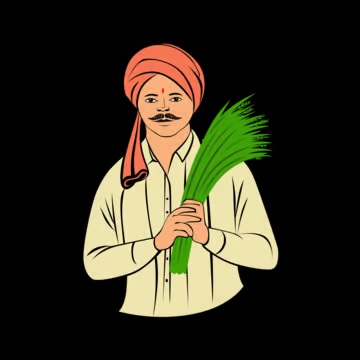
Gujarat, a state known for its agricultural diversity and rich farming history, has continuously sought ways to empower its farmers and enhance the agricultural ecosystem. One of the most significant initiatives taken by the Gujarat government in recent years is the creation of the Farmer Registry Gujarat. This digital registry system is aimed at benefiting farmers in various ways, from ensuring direct benefit transfers to creating a transparent and inclusive agricultural environment.
In this article, we will explore the Farmer Registry Gujarat, its importance, how it works, and the benefits it brings to the farming community. By the end of this article, you will have a thorough understanding of the Farmer Registry Gujarat, the registration process, and its role in transforming agriculture in the state.
Table of Contents
What is the Farmer Registry Gujarat?
The Farmer Registry Gujarat is a government initiative aimed at creating a centralized, digital database of all farmers in the state. This database helps in identifying eligible farmers who can benefit from various state and central government schemes and programs. It also enables the government to directly transfer benefits to farmers without any intermediary, ensuring faster and more efficient delivery of subsidies, crop insurance, financial aid, and other support services.
The system ensures that every farmer is registered and recognized by the government, which is essential for ensuring that they receive the full range of services and benefits available. It is designed to streamline the administrative process, reduce fraud, and ensure that the right farmers get the support they need.
Objectives of the Farmer Registry Gujarat
The primary objectives of the Farmer Registry Gujarat are to:
- Create a Digital Database of Farmers: The registry aims to provide a comprehensive list of farmers in the state, including their landholdings, crops grown, and other relevant details.
- Direct Benefit Transfer (DBT): The system enables the Gujarat government to deliver benefits directly to farmers, such as subsidies, crop insurance, and government schemes.
- Transparency and Accountability: With a centralized registry, the government can ensure that the right farmers are receiving the correct benefits and that there is no leakage or misallocation of funds.
- Improve Agricultural Planning: By having detailed data on farming practices, crop patterns, and land ownership, the government can make better decisions related to agricultural policies and programs.
- Access to Credit and Financial Assistance: Registered farmers are more likely to access loans and financial services from banks and government schemes.
How to Register for the Farmer Registry Gujarat?
Registration for the Farmer Registry Gujarat is an easy and straightforward process. The government has made sure that the registration process is user-friendly, both online and offline, to ensure that farmers from rural areas can also easily access it.
Online Registration Process
- Visit the Official Portal: To begin the registration process, visit the official Farmer Registry Gujarat portal.
- Fill in Personal Details: Farmers will need to provide their personal information, including their name, father’s name, address, and contact details.
- Provide Land Details: Information about the land the farmer owns is required, such as the location, area, and type of crops grown.
- Upload Required Documents: The farmer will need to upload proof of identity (like Aadhar Card), proof of land ownership, and any other relevant documents.
- Submit and Verification: Once the form is filled and submitted, the details will be verified by government officials, and the farmer will receive confirmation of their registration.
Offline Registration Process
For farmers who do not have access to the internet, the government has made provisions for offline registration. Farmers can visit the nearest Krushi Seva Kendra (Agriculture Service Center) where they can fill out the required forms and submit them with the necessary documents. After verification, the farmer will be registered in the system.
Key Benefits of the Farmer Registry Gujarat
1. Financial Benefits and Subsidies
The primary benefit of being part of the Farmer Registry Gujarat is access to a range of financial aids and subsidies from both the state and central governments. These include:
- Subsidies for Seeds, Fertilizers, and Pesticides: Registered farmers are eligible for subsidies on various agricultural inputs that help reduce the cost of production.
- Direct Benefit Transfers (DBT): Financial aid, including compensation during natural calamities, is directly transferred to the farmers’ bank accounts, ensuring timely and transparent delivery of funds.
- Insurance Benefits: The registry helps ensure farmers are included in crop insurance schemes, providing a safety net in case of crop failure.
2. Crop Insurance and Protection
Gujarat has often faced unpredictable weather patterns, including droughts and floods. The Farmer Registry Gujarat enables farmers to be a part of the Pradhan Mantri Fasal Bima Yojana (PMFBY) and other crop insurance schemes. With accurate data on the type of crops grown and the land area, farmers can get coverage for their crops, safeguarding their livelihoods against unforeseen risks.
3. Access to Credit and Loans
With proper registration, farmers can easily avail of Kisan Credit Cards (KCC) and other financial assistance schemes, helping them access loans with lower interest rates. This is crucial for farmers looking to expand their farming activities, purchase equipment, or invest in new technologies.
4. Government Scheme Benefits
Farmers who are registered under the Farmer Registry Gujarat are automatically eligible for various state and national schemes. These include schemes related to irrigation, soil health management, agricultural education, and technology adoption. This access to government support significantly enhances farmers’ productivity and incomes.
5. Data-Driven Policy Making
Having a centralized database of farmers helps the Gujarat government make data-driven decisions. This enables the development of policies that address specific challenges faced by farmers, such as water scarcity, soil erosion, or pest control, ensuring that agricultural development is targeted and efficient.
6. Promotion of Sustainable Agricultural Practices
Farmers registered in the system have better access to training and information related to sustainable agricultural practices. These include modern techniques in organic farming, crop diversification, and efficient water usage, all of which help increase crop yields while reducing environmental impact.
Role of Technology in the Farmer Registry Gujarat
The Farmer Registry Gujarat is a prime example of how technology can transform traditional sectors like agriculture. The entire registration process is conducted online, allowing for faster processing and verification. Additionally, technology helps the government monitor agricultural trends in real-time, which helps in policy formulation and managing resources more efficiently.
Technologies like Geographical Information Systems (GIS) and Remote Sensing are also integrated into the system to map farm locations and monitor crop health, soil conditions, and water usage. This helps in managing irrigation resources better and provides timely data to assist farmers in taking the right actions to protect their crops.
Common Challenges and Solutions
1. Limited Digital Literacy
While Gujarat is one of the more developed states in India, there is still a significant percentage of farmers who are not familiar with digital tools. To address this, the state government has launched awareness campaigns and provided training to farmers at the Krushi Seva Kendras. Additionally, farmers can still register offline, ensuring that no one is left out.
2. Data Inaccuracy
The accuracy of the data provided during registration is crucial for ensuring that farmers receive the right benefits. To minimize errors, the government has a team of officials who verify the data submitted by farmers and ensure that the registration information is correct.
3. Accessibility Issues
Although most of the registration process is digital, there are still rural areas with limited internet access. The government has addressed this by providing registration services at local government offices and Krushi Seva Kendra, ensuring that all farmers can participate, regardless of their location.
Future of the Farmer Registry Gujarat
The Farmer Registry Gujarat is an evolving initiative, and as the agricultural landscape continues to change, the system will likely be upgraded with new features. In the future, the government plans to incorporate advanced technologies like artificial intelligence (AI) and machine learning (ML) to predict crop yields, assess market prices, and provide tailored advice to farmers on crop management.
Furthermore, the system will likely integrate with more state and national programs to enhance farmers’ access to benefits, credit, and resources.
Conclusion
The Farmer Registry Gujarat is a revolutionary step towards empowering farmers in Gujarat. By creating a transparent and accessible system, the government has laid the groundwork for a more inclusive and efficient agricultural ecosystem. Through registration, farmers are better equipped to access financial aid, crop insurance, government schemes, and sustainable agricultural practices. As technology continues to evolve, the Farmer Registry Gujarat will play a crucial role in shaping the future of farming in the state, making it more resilient, productive, and profitable for farmers across Gujarat.
Farmers in Gujarat who have not yet registered are encouraged to do so to ensure they can benefit from these numerous advantages and be part of a progressive agricultural community.



